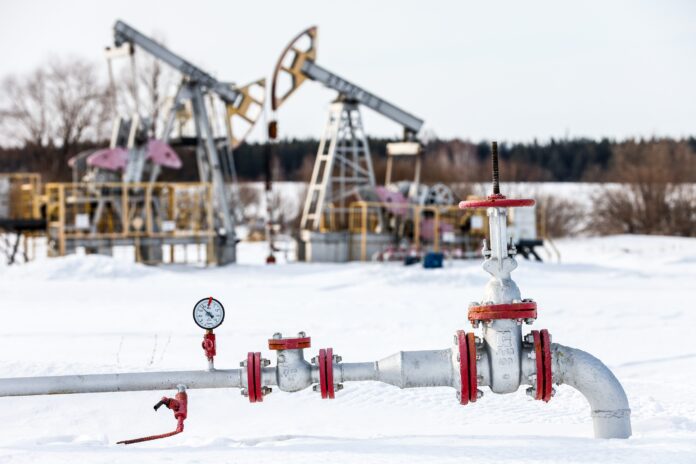The European Commission has proposed a ban on Russian coal imports as part of a sweeping new package of sanctions on Moscow, and EU officials say oil could be next.
The coal ban, if approved by member states, would be the European Union’s first on any energy import from Russia since it invaded Ukraine on Feb. 24.
Calls for the EU to sanction oil and possibly gas have gained impetus this week in response to civilian killings that Ukraine and its allies have called war crimes.
“These sanctions will not be our last sanctions,” the head of the EU executive, Ursula von der Leyen, told the European Parliament on Wednesday. “Now we have to look into oil and revenues Russia gets from fossil fuels.”
Here’s what an EU oil embargo would mean.
Russia is the world’s largest oil exporter, and among the top three producers globally alongside the United States and Saudi Arabia.
It exports 7 to 8 million barrels a day of crude and refined oil products, according to the International Energy Agency. Around half of Russia’s 4.7 million barrels per day of crude exports go to the EU.
U.S. and EU strike LNG deal amid goal to reduce reliance on Russian oil – Mar 25, 2022
According to the central bank, Russia’s total exports reached $489.8 billion in 2021. Of that, crude oil accounted for $110.2 billion and oil products for $68.7 billion, versus $54.2 billion for pipeline natural gas.
Blocking oil would have a far bigger financial impact than the coal sanctions the EU has proposed, depriving Moscow of a major revenue stream.
At current prices, Europe is sending around $450 million per day to Russia for crude oil and refined products, around $400 million per day for gas, and roughly $25 million for coal, according to thinktank Bruegel.
However, many European buyers are already “self-sanctioning” with Shell, ENI and Equinor among those to have voluntarily suspended purchases.
As a result, Russian Urals crude is trading at a heavy discount, with India among those hiking imports of the cheaper supply since Moscow launched what it calls a “special military operation” in Ukraine.
Trending Stories
‘Beyond excited’: Woman from Nova Scotia wins on Jeopardy!
6th COVID-19 wave: Experts urge masking, boosters to tackle latest surge
Direct sanctions, by curtailing Russian output, could push up global oil prices however. Brent crude prices could be around 21% higher on average in 2022 in such a scenario, compared with a reference case where self-sanctioning caused a smaller shut-in of Russian supplies, according to the Oxford Institute for Energy Studies.
Russia is Europe’s biggest oil supplier, providing 26% of EU oil imports in 2020, according to Eurostat data. Other suppliers include Norway, Kazakhstan, the United States, Saudi Arabia and Nigeria.
The Netherlands, Germany and Poland are Europe’s biggest buyers of Russian barrels, according to Eurostat. Poland, for example, buys more than half of its oil imports from Russia.
Canada capable of increasing oil production, but market access and pipelines still a big issue – Mar 24, 2022
Overall, 97% of the crude that Europe uses comes from abroad. Russian diesel also covers about 10% of Europe’s demand.
Oil and petroleum products provided around a third of the EU’s gross available energy in 2020 – a measure of the overall energy supply which includes electricity as well as transport and chemical production, which rely on oil.
Greece’s biggest oil refiner, Hellenic Petroleum, which relies on Russia for about 18% of its crude intake, last month secured additional supplies from Saudi Arabia.
Poland’s biggest refiner PKN Orlen and Sweden’s largest refiner PREEM are both using North Sea oil to replace new orders of Russian crude.
Amid a tight gas market and limited European infrastructure for importing liquefied natural gas, analysts say it is easier for the EU to replace Russia’s oil than gas, as other crude producers could increase volumes. Whether they will, is another question.
“Spare capacity is available in some major producers outside Russia, but the disappointing outcome of recent OPEC+ discussions suggests limited willingness to provide immediate relief to the market,” the IEA said last month, referring to the producer group’s policy of only incrementally increasing its output.
Australia, Canada and the United States – who are less reliant on Russian supply than Europe – have already imposed outright bans on Russian oil purchases.
The EU has pledged to quit all Russian fossil fuels by 2027, and will publish a plan for how to do so in May. EU policymakers are currently negotiating a raft of climate change policies – including a 2035 ban on new fossil fuel cars – which Brussels expects to cut EU oil use 30% by 2030, from 2015 levels.
However, countries remain split on an immediate embargo. Germany, Europe’s biggest economy, has said it plans to quit Russian oil as soon as possible but that an immediate ban is not possible because of the economic fallout.
© 2022 Reuters



